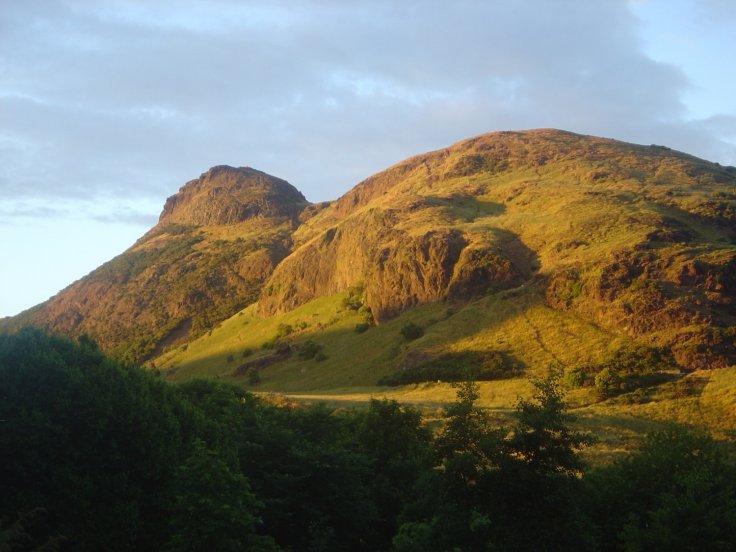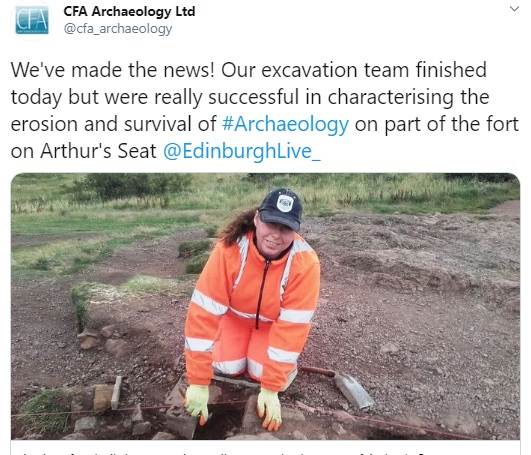A team of archaeologists, working on top of Arthur's Seat in Edinburgh, unearthed the remains of an ancient hillfort which is believed to be 3,000 years old. As per the researchers, the prehistoric walls atop the extinct volcano were built by an Iron-Age Celtic tribe, Votadini.
The tribe once lived in southeast Scotland and northeast England was also responsible for the burial site at Traprain Law, located six-kilometer east of Haddington in East Lothian — which was thought to have been the capital of the Votadini tribe. The findings from this site revealed that the tribe was Romanized and assimilated into early Scottish culture.

The Excavation at Arthur's Seat
The excavation work at Arthur's Seat, the main peak of the group of hills in Edinburgh, Scotland, is being carried out by CFA Archaeology in collaboration with Historic Environment Scotland. CFA Archaeology recently tweeted: "More results from Arthur's Seat! The wall line of what we think is the fort's rampart is still surviving despite erosion. Hard work to get our tools up the hill, but worth it for the view!"
Previous excavation work at the site had revealed 18-ft-thick stone walls, reaching around 4 feet tall, that blocked off one side of the peak, while shear cliffs protected the other. The team of archaeologists found that the Votadini used part of the land within the hilltop settlement for farming.
Historic Environment Scotland told Edinburgh Live that "this was programmed work to evaluate the condition of archaeological remains within the park," which began in March but postponed following the Coronavirus pandemic. HES, the non-departmental public body responsible for promoting Scotland's historic environment, added that as a prehistoric monument which has seen thousands of years of activity, "the park is rich in archaeological remains, which provide an indication of those who lived here before."
A team from HES have opened up three trial trenches to identify the nature and extent of archaeological features on the plateau near the summit of Arthur's Seat. Though the initial findings are still being assessed. HES said these discoveries will help build a fuller picture of how the park was used and developed over the centuries.

Arthur's Seat History
Arthur's Seat is traceable to a folktale suggesting that the mythical King Arthur is buried in a glass coffin at the volcanic hill. In the summer of 1836, a collection of 17 curious 'Lilliputian coffins' was found by a group of boys with tiny, dressed dolls in a recess in the rocks of the northeast side hill.
Votadini, the first settlers of Scotland who arrived at the onset of the post-glacial period (as early as 7000 BC), used swords and other metal objects which indicate that by about 1500 BC these ancient people were using the crags of Arthur's Seat for defense.









